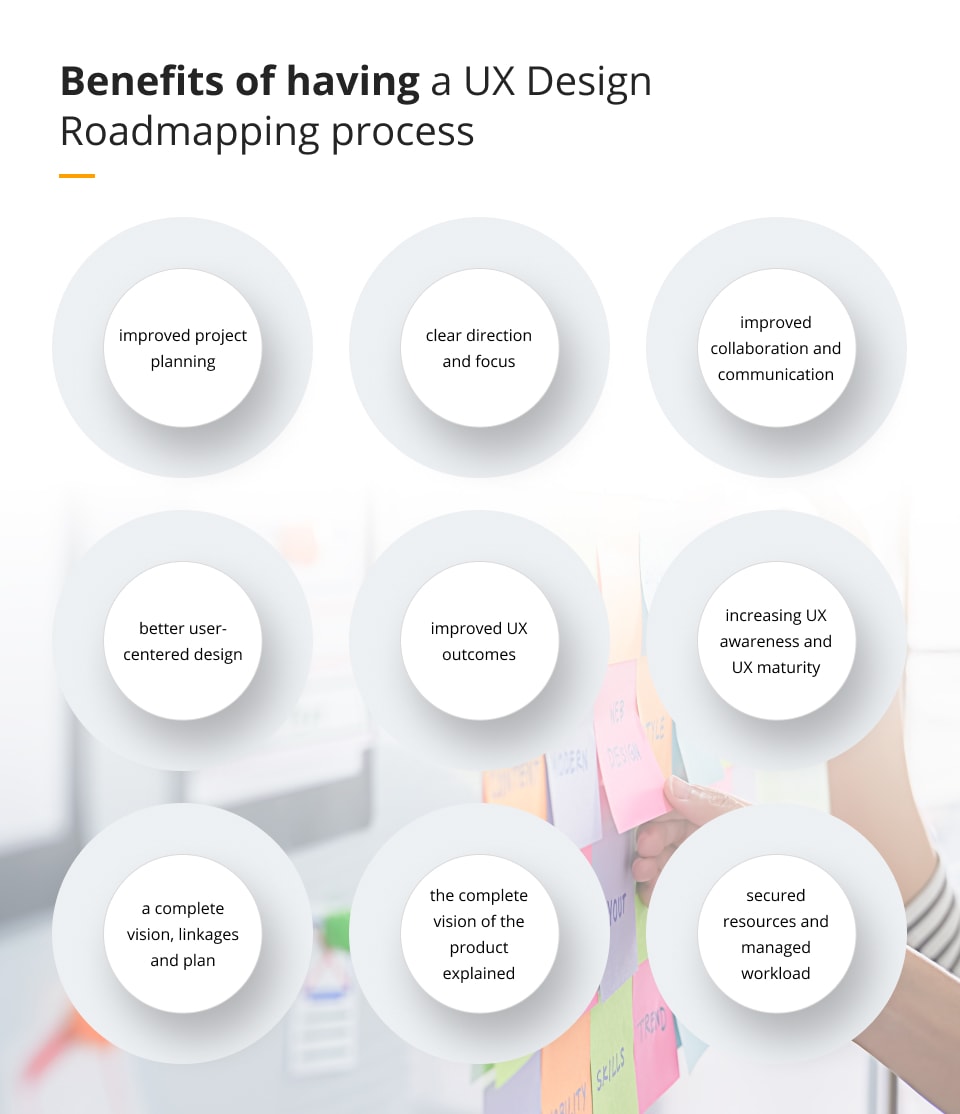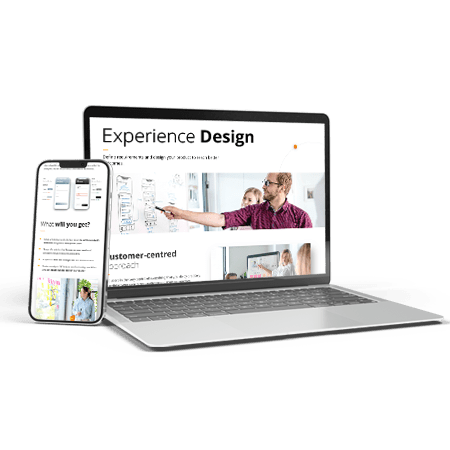
How to create an effective UX Design Roadmap?
In all software development processes, a good UX Design Roadmap can help you make a better and more successful product. Let's look at what it takes to create one!
What is a UX Roadmap?
Similarly to maps used by hikers or drivers, a UX Roadmap can help you get from one point to another – hence its name. How to define it? Probably best as a strategic plan that outlines the steps and timeline for achieving the user experience goals of a product or a service.
It usually includes a high-level overview of the UX design process, its key milestones and deliverables, as well as the resources and budget required to achieve them.
Simply put, a UX Roadmap is a visual representation of the UX design strategy that helps align with stakeholders, prioritise ideas and initiatives and go in the right direction, no matter the stage of your software development process.
When and why would you need a UX/UI Roadmap?
Let’s go back to the normal maps. We need them every time we want to reach a certain destination.
Exactly the same is true with UX Roadmaps – you need them every time you are embarking on a new product development or redesigning a project which involves creating a user interface (UI) and user experience (UX) design.
For this reason you need UX/UI Roadmap in the following situations:
- when starting a new project, to ensure your design process is structured and focused on the goals you want to achieve and to give you clear directions,
- when redesigning an existing project, to identify areas for improvement and outline the steps required to achieve the outcome,
- when integrating new features, to ensure they are integrated in a way that aligns with the overall UX and UI design,
- when taking care of the user-centered design as UX Roadmap allows to ensure the design process remains focuses on user needs and preferences,
- when the composition of the UX team changes, to get strategic action from all members and a shared commitment to the new division of roles,
- when it is necessary to build UX maturity in an organisation to educate teams and stakeholders about what the UX process looks like,
- when a stage in the product life cycle changes, the product reaches PMF or enters a scaling phase to chart new strategic directions and align ventures with new product need.
What are the benefits of a UX Design Roadmap?
A UX Design Roadmap provides a strategic plan for the development and improvement of the user experience of a product or service. It outlines the key objectives, activities, and timeline for UX design initiatives, and lays at the very heart of the process’s success.
The benefits of having a UX Design Roadmapping process as a part of every software development process are numerous and extremely important. Some of the most crucial ones include:
- improved project planning, which helps prioritise design efforts,
- clear direction and focus among stakeholders about the goals,
- improved collaboration and communication, which facilitates better coordination between UX designers, developers, product managers and other stakeholders,
- better user-centered design, resulting in satisfied users,
- improved UX outcomes,
- increasing UX awareness and UX maturity within the organisation,
- a complete vision, linkages and plan from multiple departments: marketing, research, support, development and customer service,
- the complete vision of the product explained,
- secured resources and managed workload.
UX Roadmaps structure: what does it consist of?
There is not a single recipe for how to create a successful UX roadmap, as it depends on the project, team working on it and the goals that are to be achieved.
There are however some common elements most UX roadmaps will include, such as:
- Design Principles and Guidelines, outlining the overarching design principles and guidelines that serve as the foundation for UX design,
- Vision and Objectives which describe the ultimate goals and objectives of the UX design initiatives, providing a strategic direction for the team,
- Initiatives and Projects which identify what is needed to achieve the desired user experience,
- Timeline and Milestones which help setting realistic expectations and managing the progress of the UX design initiatives,
- Resources highlighting what’s needed to execute the UX design initiatives effectively,
- Risks and Blockers addressing potential risks, challenges or blockers that may impact the successful implementation of the UX design initiatives,
- Metrics and KPIs used to evaluate the success and impact of the UX design initiatives,
- Stakeholders Map providing an overview of the stakeholders involved in the UX design initiatives,
- Budget and resources required to achieve the UX design goals,
- UX Strategy outlining the high-level approach,
- Product strategy outlining the goals, target audience, and value proposition of the product,
- Product Analytics which focuse on leveraging analytics data to inform UX design decisions,
- Design System – a set of reusable components, guidelines and standards that ensure consistency and efficiency in UX design,
- Content strategy, focusing on creating and managing the content to support the user experience.
Characteristics of a successful Product Design Roadmap
Although they vary according to their goals and the teams they are created by, all successful product design roadmaps have those important characteristics:
- clear goal and objectives, aligned to business goals,
- prioritization,
- milestones that take into account the design process, its implementation and testing.
- success metrics to track the progress and evaluate the success of the design process,
- iterative approach,
- risks identified,
- adaptability and flexibility to accommodate changes in the project’s scope and timeline, which allows team to adapt to new information and unforeseen circumstances without compromising the overall design goals
- defined vision and UX strategy
- set resources to ensure the design process is focused on achieving the desired outcomes.
How to create a successful UX roadmap and make sure it does the job?
If you are keen to start working on a successful UX roadmap that will help you achieve your goals and create a great product, here are some steps to follow:
- Always plan ahead to focus on achieving the desired outcomes.
- Choose a good tool that will allow you to easily modify your roadmap every time you need it.
- Listen to the stakeholders and their needs to understand their preferences.
- Check the goals and plans of other departments within your organisation.
- Track progress to evaluate the success of the project and iterate using feedback from users.
- Continually validate your UX roadmap with users – gather feedback on the changes that are already implemented and evaluate whether they yield the desired results to make sure your roadmap is meeting the users’ needs effectively and provides them with a positive experience.
- Communicate with stakeholders to ensure everyone is aware of the stage the project is on.
- Plan for future updates and incorporate feedback from users to continually improve the user experience and stay on top of your clients’ needs and expectations.
UX Roadmap is like a strategic, smart document that allows you to conduct your software development process in a structured and well thought through manner. But if creating it seems like a headache or simply too much for the resources you have, do not hesitate to get in touch with us.
At Future Processing we are there to help you plan a strategy, design and build user-centric products to help you achieve your goals. Let us assist you in getting your design roadmap ready for new challenges.







